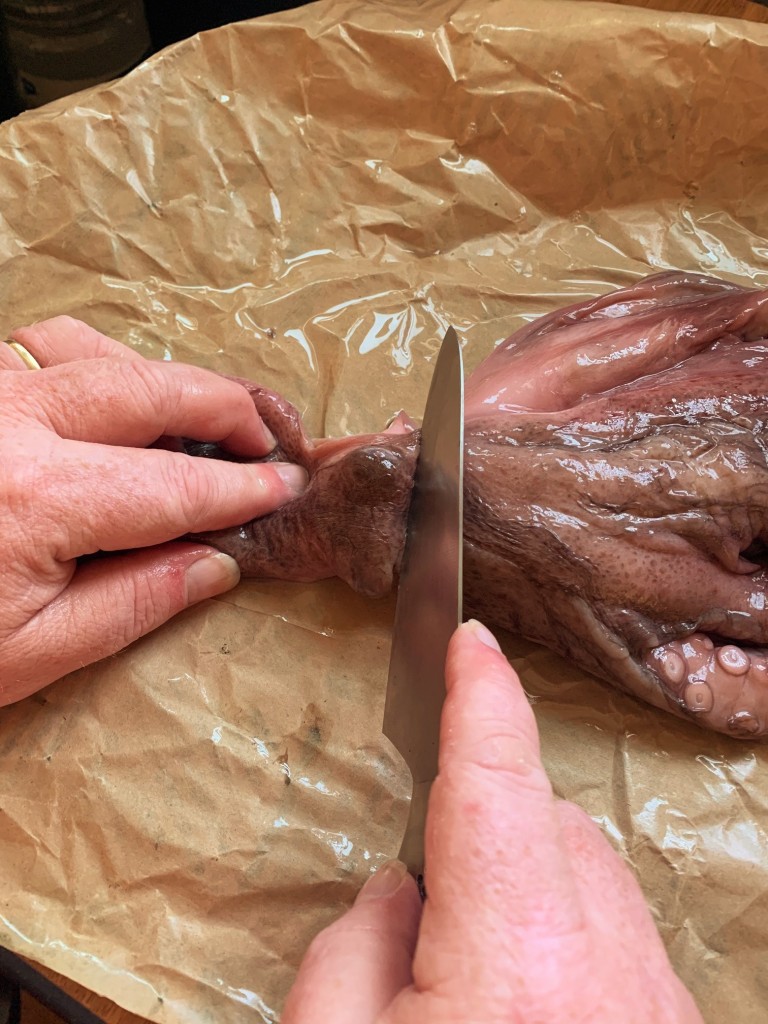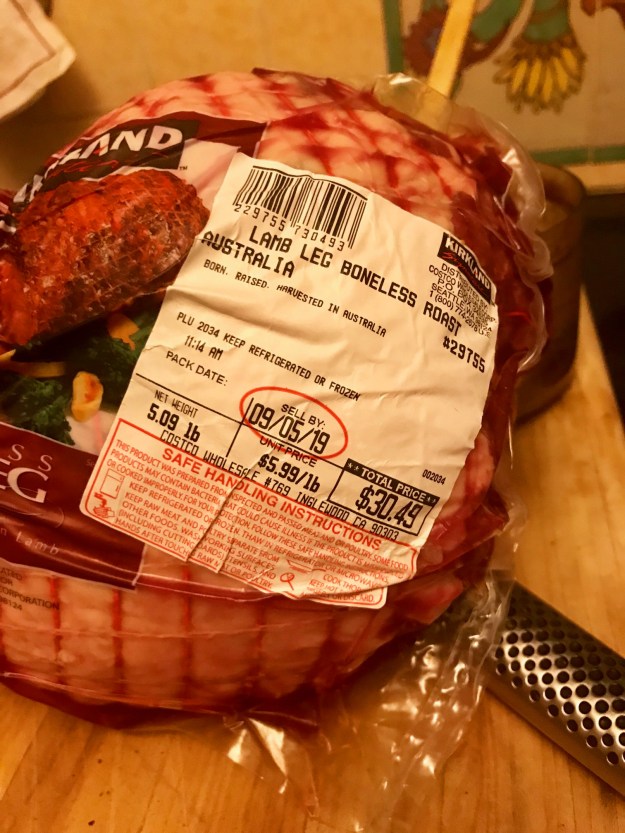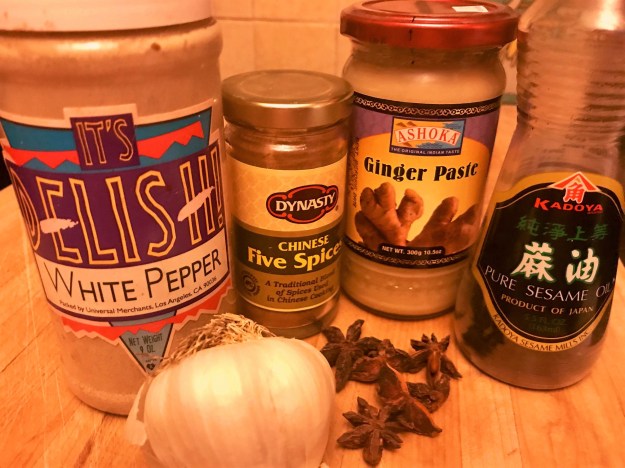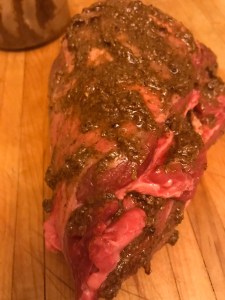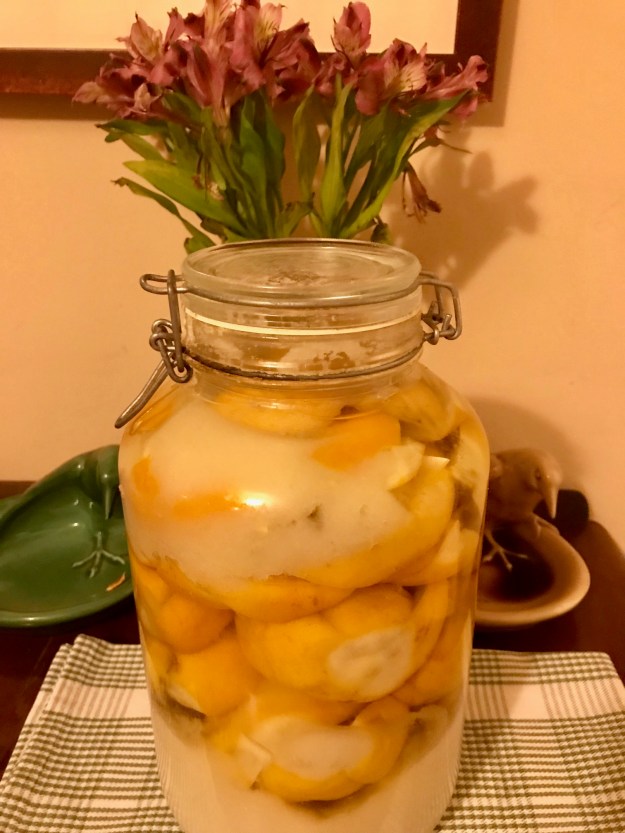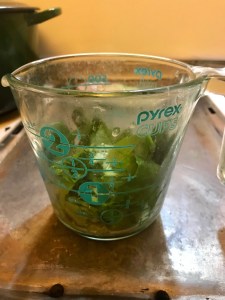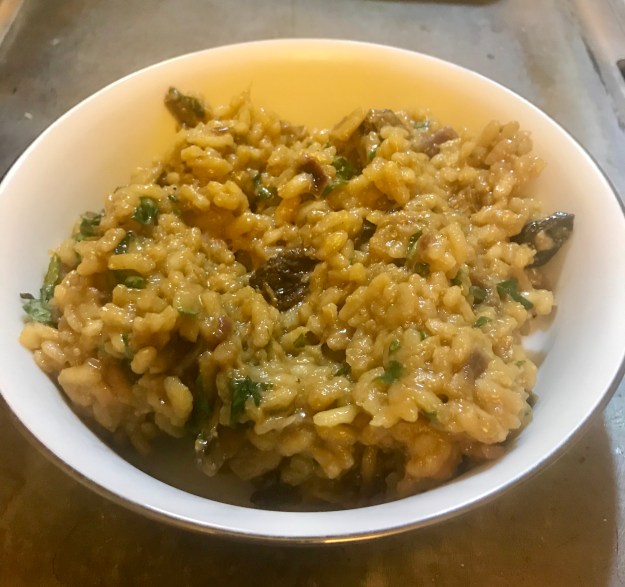
Leave it to me to post my favourite summer salad on the 20th of September, right?
But it’s still warm here in São João do Estoril, Portugal, and more importantly, couve (cabbage) is in season, while couves de bruxelas (Brussels sprouts) are not.
This salad originated at the wonderful food blog Love & Lemons, where it was featured as an only-seven-ingredient Shaved Brussels Sprout Salad. [Although it really really originated on our pal Karen’s Facebook page, which was what tipped the bride to the recipe.] Needless to say, when my betrothed first prepared it, I was sceptical. Maybe even dubious. But it was terrific, and light, and whenever she made it, we dove into our bowls like a pair of Tasmanian Devils on a meth bender. Brussels sprouts are a seasonal thing round these parts, though, and the frozen sprouts are not a good substitute — much like Christopher Lloyd, they are fairly unshavable.
Fortunately, cabbage — Savoy, or green, or red, or some combination of the three — is a highly acceptable stand-in during those months when sprouts are on the outs. And the absolutely brilliant bit about this salad (in either form) is that it will keep overnight in the fridge without going all wilty. Plus, even I can make it, which means that even you can make it. If you can operate a knife, a spoon, a whisk, and a bowl, you’re good to go.
Okay, I lied. You’re going to have to toast some slivered almonds. Trust me, it’s worth it. You can do it in the oven, or like I did, on the stovetop in a dry frying pan. Here’s a good article about the different ways of achieving this miracle of aromatic nuttiness. And yes, you’re probably — no, if my experience is any guide, definitely — going to overtoast on occasion. The good news is that, unless they’re blackened, the almonds can almost always go in the salad and work just fine.

Don’t burn your nuts.
My other favourite thing is that the salad hits every taste note: the cranberries bring sweetness, the feta is salty, the lemon has acid, the chives contribute a bit of herbaceousness to the mix, the cabbage and toasted almonds have a slightly bitter edge, and the olive oil adds umami. I’m going to sound like a bit of a broken record to longtime readers here, but I implore you to use the best olive oil you can get your hands on, and it’s worth squeezing fresh lemons for the dressing — if you can get hold of Meyer lemons, even better!
Feel free to adjust the amounts — and even ingredients — to suit your palate. Some folks prefer Parmesan or another salty cheese to Feta, and that’s just fine. No chives? Maybe you have some green onions. Walnuts rather than almonds? Go right ahead. Pomegranate seeds rather than dried cranberries? Okay. But please do give this version a go before you start your own mods, because the bride and I feel like we hit on a really good balance of elements.
INGREDIENTS
1 small (or 1/2 large) head of cabbage
240g / 1.5 cups dried sweetened cranberries (often marketed in the US as Craisins)
1 small bunch / 20g chives, finely chopped (scallions will work in a pinch)
400g / 14 oz. feta cheese, cubed or crumbled (if there’s not too much water in the pkg, you can add it to the salad)
150g / 1 cup toasted slivered almonds
FOR THE DRESSING
150ml / 5 oz. fresh-squeezed lemon juice (or about 2 lemons)
150ml / 5 oz. extra virgin olive oil (equal to lemon juice)
DIRECTIONS
Toast the almonds [see above for method(s)], and set aside to cool. Using a cleaver or large knife, shred the leafy part of the cabbage (food processors shred too finely for this salad). The solid center stalk can be discarded or julienned for use in the salad (I did the latter). Place in a large bowl. Add the dried cranberries. Chop the chives, and add them to the bowl. Crumble or dice the feta, and add it to the bowl (you can give this all a stir if you wish). Add the cooled toasted almonds.

Simple dressing — EVOO and lemon juice.
Squeeze juice of two lemons into a 500 ml / 2 cup or larger measuring cup, then add an equal amount of extra virgin olive oil. Whisk the two together for about 20-30 seconds to emulsify. Pour dressing over salad, taking care not to overdress. Toss salad so it is completely coated. For best results, return salad to refrigerator for 1-2 hours to cool. Re-toss salad immediately before serving.




